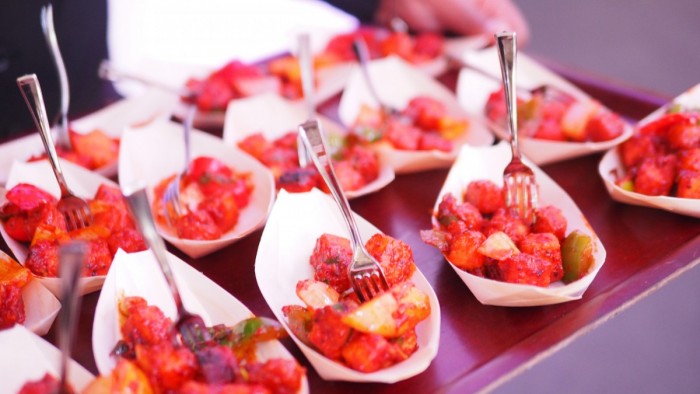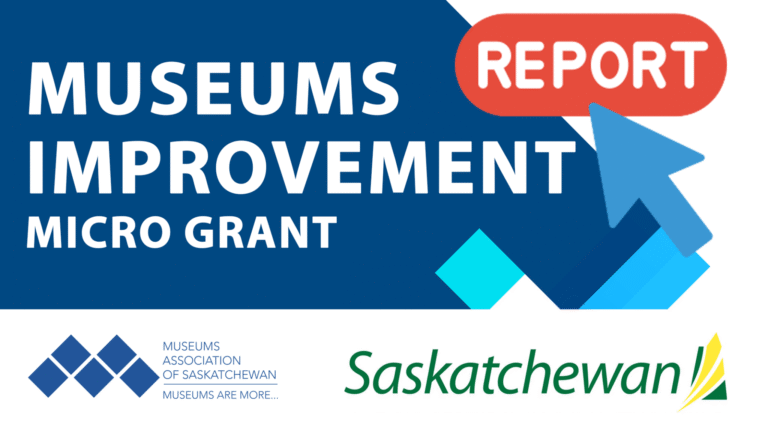
The MAS office will be closed for Christmas Holidays December 24th to January 4th.
Usual office hours will resume on January 5th, 2026
By Kathleen Watkin, MAS Museum Advisor

Photo by Chan Walrus from Pexels
In a perfect world, museums would be able to keep food and drink completely out of the museum, however, with the ever present need to creating fundraising opportunities (Parties, Fundraisers, Social Events) to support museums financially, keeping food and drink out of the museum is no longer a reality. What follows is a list of best practices for Food and Drink in the Museum.
1. An Official Food Policy
It is HIGHLY recommended that all institutions that deal with food and/or drink in any capacity have a written policy on food management as standard preservation practice. This policy should be included as part of the Museum’s larger Integrated Pest Management Documentation (IPM). Food Management Policies should not replace an IPM, but support it. This will create more consistency, oversight and enforces regulation of food and drink in the museum. The Food/Drink Policy must be agreed upon by all members of staff in order for the policy to work effectively. The more specific and detailed in relation to your museum the policy is, the more effective it will be.
When writing your policy, there are several points to consider:
a) Restrict food from collections storage and display areas. Therefore, food and collections will never meet!
b) Include clear instructions on food preparation, consumption and disposal for both in house and external food vendors
c) Address individual responsibilities for staff, visitors and vendors. All staff should be well informed and be able to explain the policy both internally and exterrnally to the public.
d) Include a list of areas in which food can be prepared, consumed and disposed
e) Highlight how housekeeping and Integrated Pest Management (IPM) might be affected by food. This includes how issues will be resolved and who will cover what costs.
f) Include clear guidelines on how staff would interact with the public to explain and enforce food regulations
g) Be upheld in all situations, even when faced with special requests. A list of trusted caterers, who have signed off on the Food Management Policy, should be created and provided to renters to ensure 100% compliance.
2. Special Events
Hosted events should be held in a specifically allocated space that is isolated from the collection. If this is not possible, then plans should be made to mitigate cross contamination. This could include removing sensitive items from the exhibition floor. Extra tables should be provided for patrons to set down their drinks and plates, so they do not use the display cases as holders. Signs reminding guests to avoid setting their plates and drinks on cases and other exhibit furniture as also helpful.
Extra waste disposal/recycling bins should be provided to ensure people clean up after themselves. Extra staff should be employed to clear away unwanted glasses and plates to ensure that the tables are never over filled. The more often the tables are cleared, the more likely patrons are to use them.
Paths for catering staff to and from the event should be created that so that they do not interfere with the collections. Extra staff should be employed at the end of the event to complete clean up. This is help to prevent pests from wanting to enter the museum.
3. Staff Issues
Staff need to be provided with a designated space to store, prepare, share and consume food that is safe and hygienic. This will prevent them from eating in or around the collection. In the “staff room,” proper wastes and recycle bins need to be provided. These bins must be cleaned and emptied regularly as part of the IPM plan. A scheduled cleaning of the common food storage areas, such as the fridge and cupboards, should also be included to help to mitigate pest infestations.
All Staff, contractors and interns should be trained on the risk of eating in collections spaces, both for their own health and safety and for the safety of the collection. Many collections had residual pesticides or toxicants on them, that are harmful to staff.
4. Signage for Visitors
Visitors are an integral part of a museum. They are also human and need to eat and thus designated space to consume food must be created. This is extremely important if visitors are permitted to bring their own food into the institution.
It is easier and more efficient if the preparation, sale, and consumption of the food occurs in one designation location. Signage for visitors needs to be clear and concise to demonstrate and justify why such rules are in place permanent staff, in-house food vendor, and other appropriate staff enforce these regulations.
5. Location of Vendor Food
Restaurants and food areas should be purpose built areas and not housed around collections. This will decrease the risk of damage, and also demonstrates the institution’s valuing their collections, that they hold in the public trust. Waste disposal is paramount this these areas and might require more housekeeping then the galleries themselves.
6. Design of Food
Food that is served in the museums should take into consideration the impact not only on resources, but also ease of preparation and consumption. For example, hors d’oeuvres that can be eaten with one hand and no deep frying of foods that can splatter hot oil and is greasy. Also consider prohibiting foods that are difficult to remove, stain or spill easily. Examples include gum, red wine, popcorn, ice cream etc.
7. Food Preparation Areas
It is important that food preparation areas for staff, and vendors be hygienic and easy to maintain. Set up a cleaning schedule so that the areas are sanitary and clean at all times. Make sure that you have proper storage for excess food. Ensure that any area that is used to cooking is properly ventilated and fire suppressions are up-to-date and accessible. If possible, prepare food off site so that it enters and leaves the museum on the same day, thus reducing pest risks.
For an example of a strong, Food and Beverage Policy, see pg. 36 of the Michigan State University Museum’s Collection Policy available @ http://www.connectingtocollections.org/wp-content/uploads/2016/09/MSU-Museum-Collections-Policy-Food-and-Beverage-Policy-Pages.pdf
For More Information, See:
English Heritage. “Practical Conservation Guide for Successful Hospitality Events in Historical Houses.” English Heritage 2004. https://www.english-heritage.org.uk/siteassets/home/learn/conservation/collections-advice–guidance/practical_conservation_guidelines_for_successful_hospitality_events_in_historic_houses.pdf
“Food Management.” Society for the Preservation of Natural History Collections Wiki. 6 July, 2016. Website: http://spnhc.biowikifarm.net/wiki/Food_Management
“NMAI Integrated Pest Management: Food in the Museum Policy.” National Museum of the American Indian. February 3, 2004. Website: http://museumpests.net/wp-content/uploads/2014/03/foodpolicy.pdf
Smyk, Laura and Marcie Kwindt. “No Food, No Drink, No Pests!” Canadian Museums of Nature’s Blog. May 31, 2012. Website: https://canadianmuseumofnature.wordpress.com/2012/05/31/no-food-no-drink-no-pests/

Usual office hours will resume on January 5th, 2026

Just a reminder that the Final Report for the Museum Improvement Micro Grant for Community Museums is due December 5th! Your final report will require you to provide a brief

Thursday October 16, 202512:00pm CSTOnline via Zoom: https://us02web.zoom.us/j/86760471705?pwd=XjoSlWAP0TJZVYrprylmLqujOkVrk2.1 No registration required. The Museum Grant Program (MGP) provides operational funding to help foster strong, vibrant, community-based Saskatchewan museums that are valued